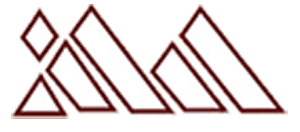Petroglif Lumuyu: Suatu Pendokumentasian Semula
Abstract
Pendokumentasian arkeologi mengandungi bebarapa langkah tertentu seperti kajian arkib, pemerhatian, merekodkan penemuan tinggalan yang ditemui melalui aktiviti ekskavasi. Proses pendokumentasian melibatkan usaha berterusan merangkumi pelbagai peringkat seperti perancangan, mengenal pasti perkara yang mahu didokumentasikan dan langkah yang boleh dicadangkan untuk pemuliharaan kepada pihak yang berwajib. Kertas kerja ini akan membincangkan pendokumentasian semula terhadap tapak petroglif Lumuyu dan meninjau kembali keadaan tapak sama ada berlakunya ancaman kerosakan dari segi aktiviti manusia dan alam semula jadi.
Kata Kunci: Pendokumentasian Semula, Petroglif Lumuyu, Pemuliharaan
Archaeological documentation contains such a certain number of steps like doing archival research, survey, record the discovery of the remains through pre-excavation activities and others. The process involves documenting ongoing efforts of various stages such as planning, identify what we want to documented and a alternative measure to conserve the site . This paper will discuss the re-documentation of petroglyphs Lumuyu site and review it conditions wheather there is a threat of damage from human activities and deterioration from nature.
Keyword: Re-documentation, petroglyphs Lumuyu, conservation
Full Text:
PDFReferences
Archaeology And Historic Preservation: Secretary Of The Interior's Standards And Guidelines http://www.cr.nps.gov/local-law/arch_stnds_0.htm [13 October 2012].
Crowford, I. 1986. A Rock Engraving Near Bekuku, Sabah. Sabah Museum and Archives Journal. Vol. 1 (1): 11-15.
Doehne, E., Price, C. A. 2010. Stone Conservation : An Overview of Current Research. USA: The Getty Conservation Institute.
Higgins, H. C. 1992. Vandalism: Research, Prevention, and Social Policy, Rock Art Vandalism : Causes and Preventation. Oregon: U.S Department of Agriculture Forest Service Pacific Northwest Research Station.
Hughes, J. P. 1970. How To Make Rubbings of Rock Art. Journal El Palacio 77: 18-24.
Lyon, E. A., 1989. A Documentation Strategy Of Archaeology, Tracing Archaeology's Past: The Historiography of Archaeology edited by Andrew L. Christenson, Southern Illinois University at Carbondale, Center for Archaeology Investigation.
Innovation In Archaeological Documentation Methods. http://mycoordinates.org/innovation-in-archaeological-documentation-methods [13 October 2012].
Kirkland, F., Newcomb, W. W. 1967. The Rock Art of Texas /Indians. Texas : University of Texas Press.
Mathews R.H. 1987. Australian Rock Carving, Proceedings Of The American Philosophical Society Vol. 36 (155), hlm. 195-208.
Phelan. P. R. 1997. Traditional Stone and Wood Monument Of Sabah With Photograph. Sabah: Pusat Kajian Borneo Yayasan Sabah.
Tan, Cheng Hock. 2012. Bahagian Konservasi Jabatan Muzium Negeri
Sabah. Temu bual, 15 November
Sabah Muzium. 1985. Briefing Notes For The Honourable, the Minister of Culture, Youth and Sports Datuk Conrad Mojuntin, A Review of Activities in 1980 and 1981 and the New Sabah Complex.
Whitley, D. S., 1998. Finding Rain in the Desert : Landscape, Gender and Far Western North American Rock Art edited Christopher Chippindale and Tacon, Paul S. C. Archaeology Rock Art, Cambridge University Press.
Walter, M. N., and Fridman, E. J. N., 2004. Shamanism : An Encyclopedia Of World Beliefs, Practices and Culture, Santa Barbara, California.
Refbacks
- There are currently no refbacks.

IKATAN AHLI ARKEOLOGI MALAYSIA
d/a Institut Alam dan Tamadun Melayu
Universiti Kebangsaan Malaysia
43600 UKM Bangi, Selangor Darul Ehsan, Malaysia
Tel: +60 3 8921 5280
